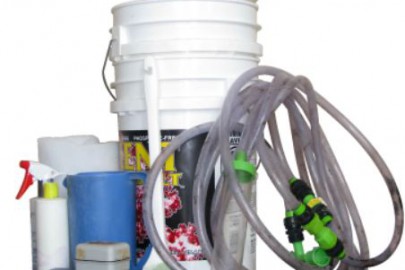Tropheus
Introduction
The Tropheus species are originally from Lake Tanganyika, Africa and are widely distributed throughout the lake. They are a moderately deep bodied fish that seems to have a larger head in proportion to the body. The body narrows as it forms the tail and the caudal fin is fan shaped. They vary in size depending upon the species. The Black “Bemba/Pemba” species is perhaps the smallest reaching about 4 to 4.75″ (10 – 12 cm) in length while the “mpimbwe” species may be the largest, and it reaches up to about 6” (15 cm). They can live for up to 10 years or even more depending on how well they are taken care of.
Tropheus Characteristics
1. The Tropheus will often have an overall dark body and fins with a bold contrasting band around their middle or large color blotches on the sides or head. The blotches are often bright yellow or red in color.
2. This variety can have a red body with a black head, black along the upper surface of the body and dorsal fin, and on the tail fin. They can also have a yellowish or dark golden body with reds in the dorsal fin and sometimes on the pectoral or anal fin. Some varieties have striping.
3. This species has an overall black body and fins with a bold wide yellow band in the center of the body.
4. This species has a dark golden to brown body color with thin yellow stripes and there can be a yellow or reddish color to the cheeks or chin area of the head. Sometimes the striping may be absent.
Tropheus fish are suitable for more experienced aquarium keepers since they very demanding when it comes to keeping. This can be attributed to their susceptibility to certain infections of the intestinal tract such as “bloat”, therefore they require more stringent requirements with diet and habitat. They are also highly aggressive. They can be moderately easy to keep if they are properly fed and the water quality is kept up, but difficult if not. They do best in a species tank, and only with other herbivorous types of cichlids included if the tank is large. The aquarists must be willing to do frequent water changes and provide appropriate tank mates.
Tropheus Diet
The Tropheus species are omnivores. You should feed them on a spirulina based flake and pellet. If you use pellets, hold them underwater for a few moments before the fish eat them. That may prevent air released from the pellet from getting trapped in the belly of the fish. They should have spinach or romaine at least once a day. Only include foods that are high in fiber. Avoid soft or slimy foods as well as Tubifex, brine shrimp, beef heart, and mosquito larvae.
Aquarium Care
Do water changes regularly, this is very important. Water changes of 15% twice a week or 30% weekly, depending on stocking numbers and removing uneaten food will help prevent disease. They cannot handle large water changes very well unless the new water chemistry closely matches the water they are in. If a large water change is needed, changing 15% every couple of days should bring water back to normal. This inability to tolerate large water changes is due to Lake Tanganyika being very deep and the water tends to stay stable.
Tropheus Diseases
1. Wounds, minor fungal infections and film over the eyes of fish. This happens mainly during transit. Treatment is done by use of marine salt (used for salt water fish) which will add some trace elements. However, avoid addition of too much salt.
2. Ich. Treatment is usually by raising tank temperature to 86° F (30° C) for a period of 3 days. Another alternative method is use of copper, to remove any water conditioners.
3. Skin flukes and other parasitic infestations (protozoa, worms, etc.), fungal infections, and bacterial infections.






